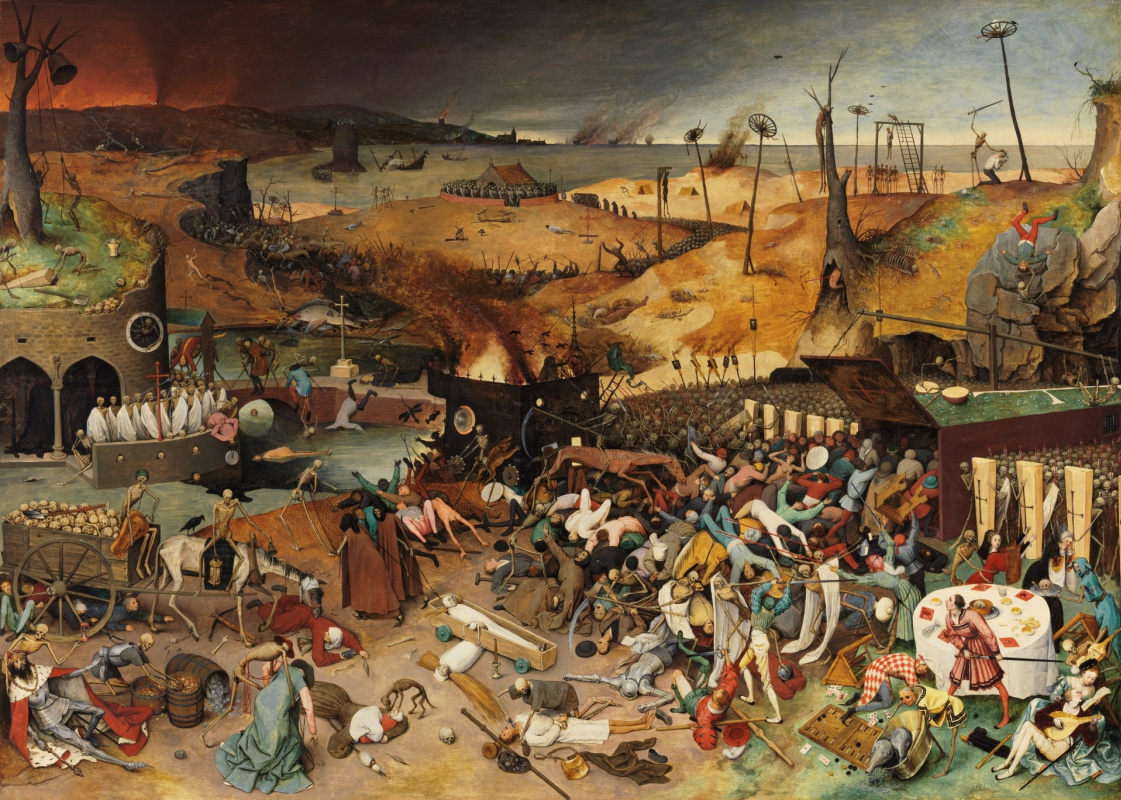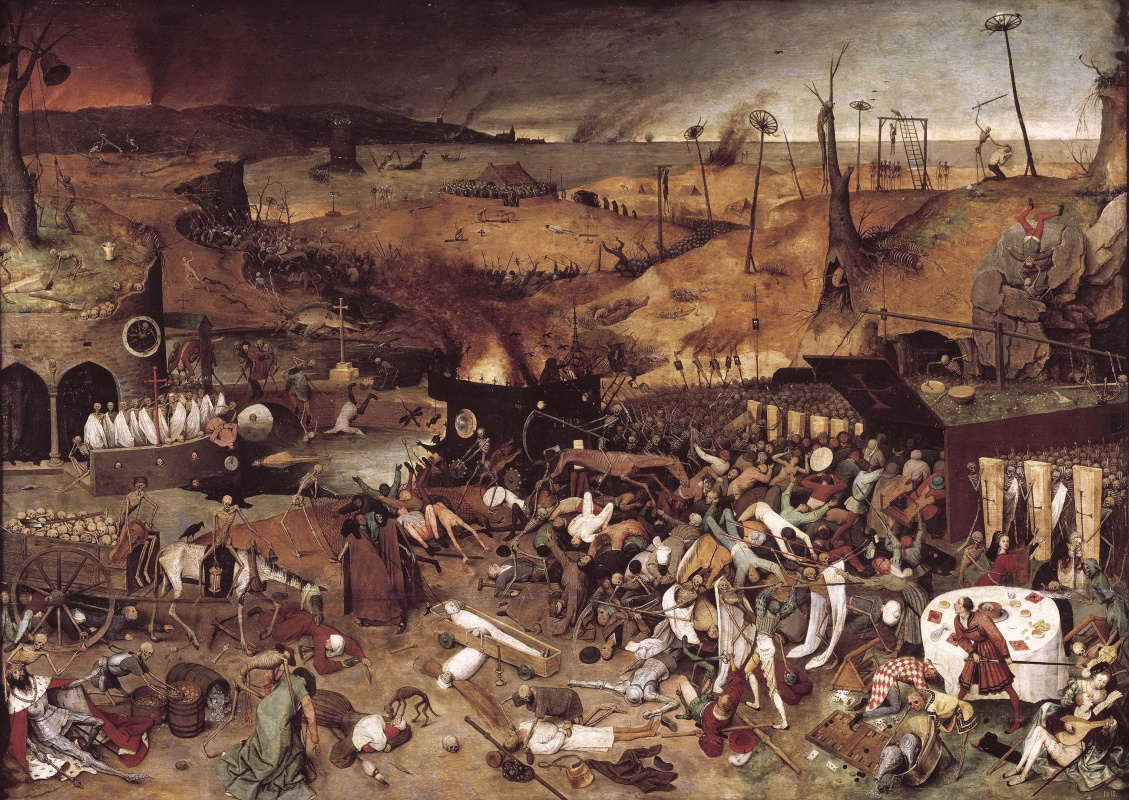log in
Enter site
Login to use Arthive functionality to the maximum
Triumph of death
Pieter Bruegel The Elder • Painting, 1563, 117×162 cm
Description of the artwork «Triumph of death»
In the middle of the XVI century death squads of Spaniards under the leadership of a fanatic of the Duke of Alba "fire and sword" went through the territory of the Netherlands (at that time a Spanish colony), to destroy Protestantism and heresy. After they left the ashes of fires and mountains of corpses, which was in the thousands. The king of Spain and a devout Catholic Philip II of Habsburg stated: "I would rather sacrifice a hundred thousand lives than fail to pursue the heretics!"
Impressed by these developments, the Pieter Bruegel created one of the most terrible and simultaneously the most impressive of his paintings "the Triumph of death".
We do not have enough data to say whether the artist himself Catholic or Protestant, and whose innocence was obvious to him. In "Triumph of death" it creates a majestic apocalyptic panorama, consisting of piles of multi-figure groups related to the topic of death. Death overtakes the heroes of the Bruegel circle: a mass slaughter and individual game, at work, at meals and even on the lover's tryst (the scene in the lower right corner). It's impossible to hide. From her no protection. Death is omnipresent.
In the geometric centre of the painting we see a grotesque image of a horseman of the Apocalypse – the skeleton of a skinny horse, bursting somewhere right in the middle of the seething battle. Hordes of skeletons, shields which serve to cover their coffins are the army of death, her loyal warriors. They do not understand the rank of their victims – skeletons and overtake the king (in the lower left corner), and the cardinal, and card tricksters, merchants, and peasants.
Love Bruegel the panoramic views of vast landscapes in the "Triumph of death" turns into a monstrous landscape, reminiscent of the scorched desert and dotted with gallows, bare skeletons of trees and poles broken on the wheel. The grass turned yellow and dried up. Water, according to swimming corpses, infected. Over the hills can be seen al a hellish conflagration. The air is foul with smoke and stench.
But worst of all in "Triumph of death" not all of the above, and the complete absence of the idea of redemption. It is not visible either in this life or after death. In the vain hope people flock raised under the black door with the cross, but it's written so that it looks more of a trap that slammed shut than an island of salvation.
Author: Anna Yesterday
Impressed by these developments, the Pieter Bruegel created one of the most terrible and simultaneously the most impressive of his paintings "the Triumph of death".
We do not have enough data to say whether the artist himself Catholic or Protestant, and whose innocence was obvious to him. In "Triumph of death" it creates a majestic apocalyptic panorama, consisting of piles of multi-figure groups related to the topic of death. Death overtakes the heroes of the Bruegel circle: a mass slaughter and individual game, at work, at meals and even on the lover's tryst (the scene in the lower right corner). It's impossible to hide. From her no protection. Death is omnipresent.
In the geometric centre of the painting we see a grotesque image of a horseman of the Apocalypse – the skeleton of a skinny horse, bursting somewhere right in the middle of the seething battle. Hordes of skeletons, shields which serve to cover their coffins are the army of death, her loyal warriors. They do not understand the rank of their victims – skeletons and overtake the king (in the lower left corner), and the cardinal, and card tricksters, merchants, and peasants.
Love Bruegel the panoramic views of vast landscapes in the "Triumph of death" turns into a monstrous landscape, reminiscent of the scorched desert and dotted with gallows, bare skeletons of trees and poles broken on the wheel. The grass turned yellow and dried up. Water, according to swimming corpses, infected. Over the hills can be seen al a hellish conflagration. The air is foul with smoke and stench.
But worst of all in "Triumph of death" not all of the above, and the complete absence of the idea of redemption. It is not visible either in this life or after death. In the vain hope people flock raised under the black door with the cross, but it's written so that it looks more of a trap that slammed shut than an island of salvation.
Author: Anna Yesterday





